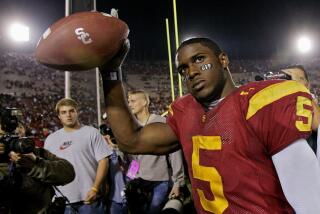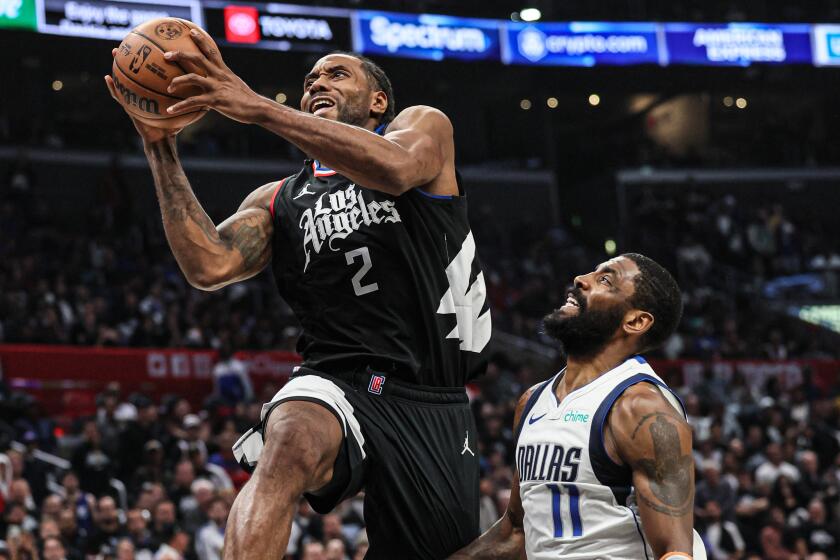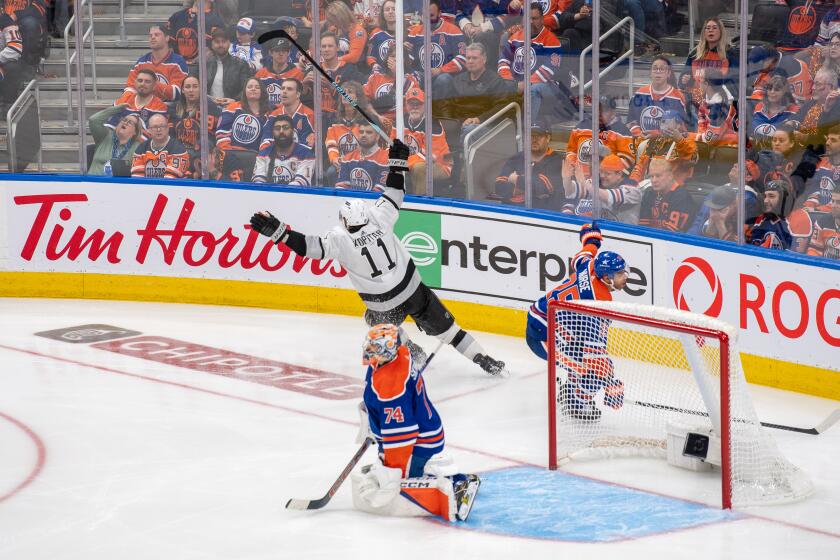When Tiger takes it to the hole, just get out of his way
In the middle of March Madness, when almost nothing can distract us from baskets and brackets, a man named Eldrick slam-dunked on us.
About an hour after North Carolina went on a high-flying run past Oklahoma, Tiger Woods soared even higher above the rim.
If you think NCAA basketball is a great show, understand that, on this Sunday, it met its match. Tiger Woods, the man who makes child’s play of a sport that the other 900 million players in the world will never figure out, stood over a 16-foot putt on the 72nd hole of a 72-hole golf tournament named after a legend, Arnold Palmer.
He makes it, he wins.
Before Sunday, he had won the Bay Hill tournament in Orlando, Fla., five times. It is almost as if he is making sure, at Palmer’s event, that everybody honor the legend of the past, but pay most attention to the perfectionist of the present.
In three of his six Bay Hill victories, Woods won by rolling in a birdie putt on the last hole. One of those times, he beat no less than Phil Mickelson.
The TV announcers were like the rest of us. They wanted the drama, welcomed it both for ratings and for the boost it would give to the sport in which they work. But like the rest of us, they were thinking, even voicing, the same combination of doubt and incredulity that is there every time Woods walks into this sort of spotlight.
Could he do this again?
Could he possibly get back to the same level of drama and unimaginable heroics that he reached while limping around the jungles of Torrey Pines on one leg and winning last June’s U.S. Open?
Was it not too soon after his return from knee surgery? This time, we certainly were expecting too much, weren’t we?
This time, just getting there, standing over a putt with a chance to win, would be enough, would tell us all we needed to know, would assure us that the leaderboard at the Masters in a couple of weeks, when we care the most, would not be missing his name.
Logic says you can’t do this every time. You can’t just take a long gaze at a line of tightly cut grass, leading to a hole 16 feet away, and expect to be able to roll a ball over all the unseen bumps and spike marks and tiny pieces of sand and stone and have it go straight and true.
Every time.
Especially when the stroke of the putter is being performed in front of thousands of people encircling you, and with the knowledge that millions more are watching at home.
Mere mortals cannot even take the club back there, much less make the putt.
Certainly not every time.
So a good try, a close miss, even a loss in the ensuing playoff would have been plenty for us to nod and say, yup, he’s back.
But then the ball rolled true. It swirled down into the hole and Tiger gave us that fist pump that is part celebration and part don’t-ever-doubt-me.
He had done it again. If it isn’t every time, it sure seems like it.
And suddenly, we realized our great fortune at living in an era when one sports star has pushed us to find a label higher than superstar.
There will be those who argue that golf is less a sport than a game; that its stars should share a hall of fame with chess players. They will argue that golfers are less athletic than they are robotic; that the real tests of athleticism take place where there is much more blood, sweat and tears.
A high percentage of those making those arguments will have golf swings like Charles Barkley.
The real point is that athletics, like every aspect of our existence, is controlled by the brain. The stronger that is within the athlete, the greater will be his or her success. Exhibit A is what Woods did again Sunday.
Eventually, Tiger Woods will go past Jack Nicklaus in number of major events won, and Nicklaus, like all of us, will salute.
Eventually, we will think of him alongside the Bill Russells and Rod Lavers and Gordie Howes and Johnny Unitases. Even the Babe Ruths and Hank Aarons and Cy Youngs.
They were all superstars. We’re still working on a label for Woods.
--
More to Read
Get our high school sports newsletter
Prep Rally is devoted to the SoCal high school sports experience, bringing you scores, stories and a behind-the-scenes look at what makes prep sports so popular.
You may occasionally receive promotional content from the Los Angeles Times.







